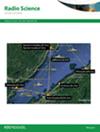Integrating drones with digital twins for aerial remote sensing
IF 1.5
4区 地球科学
Q3 ASTRONOMY & ASTROPHYSICS
引用次数: 0
Abstract
Drones are highly autonomous, remote-controlled platforms capable of performing a variety of tasks in diverse environments. A digital twin (DT) is a virtual replica of a physical system. The integration of DT with drones gives the opportunity to manipulate the drone during a mission. In this paper, the architecture of DT is presented in order to explain how the physical environment can be represented. The techniques via which drones are collecting the necessary information for DT are compared as a next step to introduce the main methods that have been applied in DT progress by drones. The findings of this research indicated that the process of incorporating DTs into drones will result in the advancement of readings from all sensors, control code and intelligence. This can be executed on the DTs, remote control for the performance of complex tasks in a variety of application environments, and simulation on the DTs without having an effect on the actual drone. On the other hand, in order to develop three-dimensional representations of structures and construction sites, a method known as photogrammetry is used to generate these models employing drones as aerial scanners. In spite of this, there are a number of technological and social-political obstacles that should be taken in consideration. These challenges include the interoperability of different sensors, the creation of efficiently optimized data processing algorithms, and concerns over data privacy and security.将无人机与数字孪生体集成,用于航空遥感
无人机是高度自主的远程控制平台,能够在不同的环境中执行各种任务。数字孪生(DT)是物理系统的虚拟副本。DT与无人机的集成提供了在任务期间操纵无人机的机会。在本文中,为了解释如何表示物理环境,提出了DT的体系结构。比较无人机收集DT所需信息的技术,作为下一步介绍无人机在DT过程中应用的主要方法。这项研究的结果表明,将DTs纳入无人机的过程将导致所有传感器、控制代码和智能的读数进步。这可以在dt上执行,在各种应用环境中远程控制复杂任务的性能,并在dt上进行模拟,而不会对实际无人机产生影响。另一方面,为了开发结构和建筑工地的三维表示,使用一种称为摄影测量的方法来使用无人机作为空中扫描仪来生成这些模型。尽管如此,仍有一些技术和社会政治障碍应予以考虑。这些挑战包括不同传感器的互操作性,高效优化数据处理算法的创建,以及对数据隐私和安全的关注。
本文章由计算机程序翻译,如有差异,请以英文原文为准。
求助全文
约1分钟内获得全文
求助全文
来源期刊

Radio Science
工程技术-地球化学与地球物理
CiteScore
3.30
自引率
12.50%
发文量
112
审稿时长
1 months
期刊介绍:
Radio Science (RDS) publishes original scientific contributions on radio-frequency electromagnetic-propagation and its applications. Contributions covering measurement, modelling, prediction and forecasting techniques pertinent to fields and waves - including antennas, signals and systems, the terrestrial and space environment and radio propagation problems in radio astronomy - are welcome. Contributions may address propagation through, interaction with, and remote sensing of structures, geophysical media, plasmas, and materials, as well as the application of radio frequency electromagnetic techniques to remote sensing of the Earth and other bodies in the solar system.
 求助内容:
求助内容: 应助结果提醒方式:
应助结果提醒方式:


